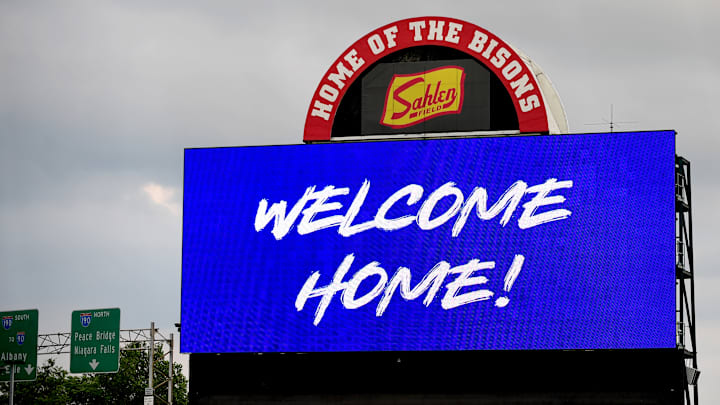A recent update of organizational standings across MLB, Triple-A, Double-A, A+ and A-ball by Josh Wittmer of ‘Down on the Farm’ on Substack suggests that the disrespect shown by third-party rankings of the Blue Jays farm system may, in fact, be merited.
Looking at the Blue Jays' organizational standings shows Toronto is under .500 overall, not just at the highest level, but across the farm system as well. Updated for games through Thursday, the big league Blue Jays are 30-32, the Triple-A Buffalo Bisons are 30-30, the Double-A New Hampshire Fisher Cats are 25-29, the High-A Vancouver Canadians are 24-25, and the Low-A Dunedin Blue Jays are 26-28.
While not included in the ‘Down on the Farm’ numbers, the Florida Complex League Blue Jays are only 6-18. Excluding the rookies, that adds up to an organizational record of 135-144, for a winning percentage of .484.
Organizational Standings (MLB, AAA, AA, A+, A). The Mariners, Brewers, and Guardians have the best overall organizational records in baseball on June 5th ⬇️📊https://t.co/qTxA0KqUXN pic.twitter.com/HzvDFANKkt
— Down on the Farm (@downonthefarm12) June 5, 2024
So while Blue Jays fans and coaches are correct to get excited about the long overdue call-ups of players like Spencer Horwitz and power hitter Orelvis Martinez from Buffalo, the long promised “waves” of MLB-ready talent just aren’t there.
The reality is that the farm system is — at best — average. And pretty, pretty good doesn’t cut it in the AL East, where ESPN ranks the Baltimore Orioles system No.1, the Yankees system No. 6, the Rays system No. 7 and the Red Sox system No. 13. Plus, the organizational standings show Baltimore, New York and Tampa are all above .500.
The Blue Jays system is ranked No. 24, and that was as of early February before injuries to top prospects Ricky Tiedemann, Brandon Barriera and Landen Maroudis, as well as before 2023 first-round draft pick Arjun Nimmala was reassigned to the FCL.
It doesn’t look any better on the MLB Pipeline or Baseball America (subscription required) rankings either. MLB has ranked the Jays farm system bottom third in baseball for three consecutive years, with the current ranking at No. 24.
As Gregor Chisholm of the Toronto Star notes, “nothing has changed that would warrant a promotion [in Toronto’s farm system ranking]. After Alejandro Kirk debuted in 2020 and Alek Manoah followed a year later, the pipeline ran dry. The one exception has been Davis Schneider, who wasn’t considered a priority but forced his way into their long-term plans with his play. The issue is, it took far too long for the organization to show it believed in his results.“
More damningly, he points out how “issues with player development and a lack of minor-league depth are why the Jays found themselves in a tricky situation on Tuesday [using, in the words of former manager Charlie Montoyo, “an opener and a guy” to take the injured Alek Manoah’s turn in the rotation]. For the last two years, the Jays haven’t had a prospect ready to handle the workload of a big-league starting pitcher, not even temporarily.”
Remember this a team with a top ten, $247M competitive balance tax (CBT) payroll, a number that is currently projected to trigger a $3M luxury tax after the season absent any changes. None of the homegrown core have been extended beyond their arbitration years, and the present 26-man roster is the 5th oldest in baseball, with the likes of 39-year-old Justin Turner, and 34-year-old outfielders Kevin Kiermaier and George Springer.
The lack of organizational depth comes in sharp contrast to the Blue Jays’ most recent opponent; the Baltimore Orioles have an absolutely stacked farm system that has produced Baseball America’s No. 1 overall prospect for three consecutive years: catcher Adley Rutschman in 2022, shortstop Gunnar Henderson in 2023, and infielder Jackson Holliday this year. To compare, the Blue Jays only have two prospects in BA’s top 100: Tiedemann at No. 40 and Martinez at No. 71.
So as the Blue Jays’ front office approaches the looming July trade deadline decision on whether to buy or sell, the organisational standings do not support an argument that Toronto has prospects who can be traded for difference-making MLB reinforcements, or multiple pitchers and position players who are MLB-ready and can immediately contribute in Toronto.
